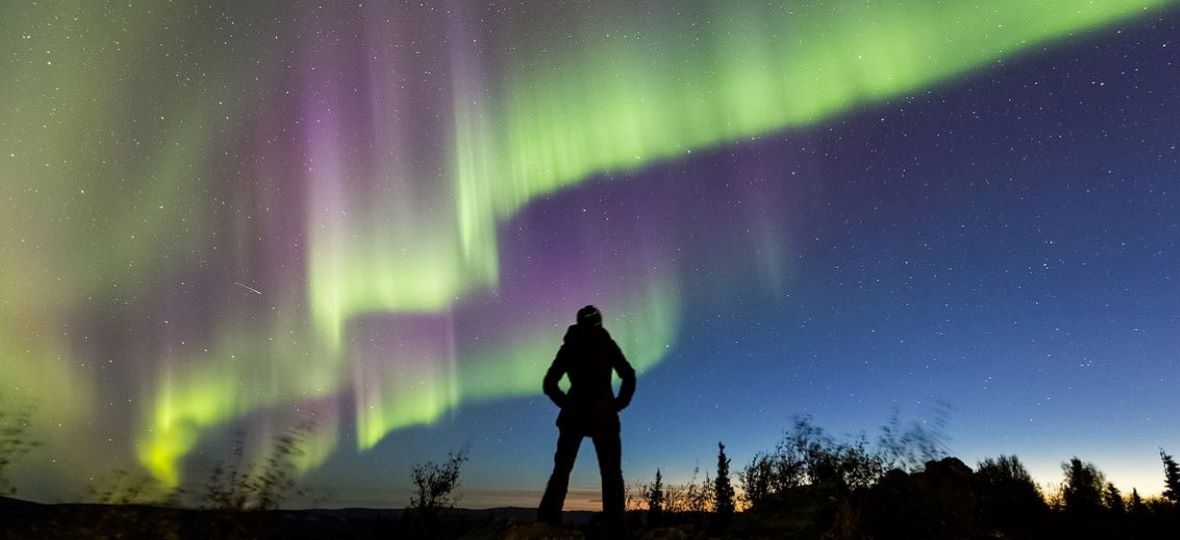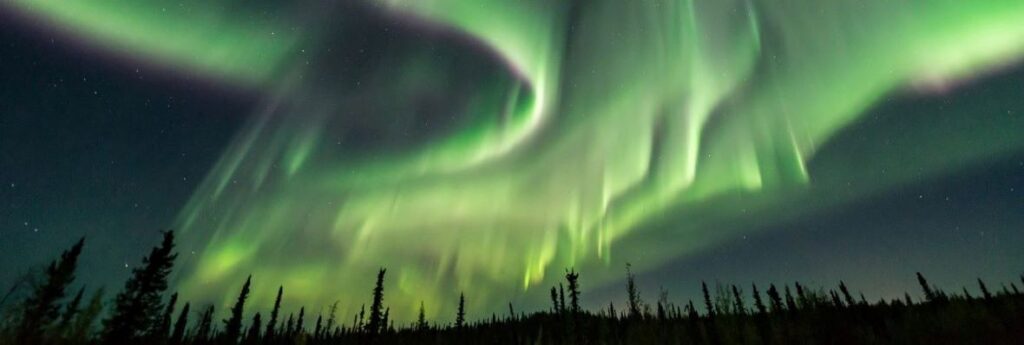Canadians might feel like insiders when it comes to seeing northern lights, but neighbouring Alaska also lays claim to awesome aurora borealis experiences – especially in Fairbanks, where the official Aurora Season switches on this week (Aug. 21) as summer’s 24-hour daylight finally dims.
Spectacular northern lights viewing lures people from all over the world to the state’s second largest city, which sits about 230 km south of the Arctic Circle at 65-degree latitude, but, more importantly directly under the “Auroral Oval” – a ring-shaped zone over the far north where aurora activity is concentrated.
Additionally, low precipitation in Fairbanks contributes to consistently clear nights and the city’s location spares it from impact from the 11-year solar cycle that affects aurora viewing in other parts of the world.
All combined these variables make the Fairbanks region an outstanding destination for possible aurora viewing, which last nine months of the year and through all four seasons until around April 21.
The aurora is visible in Fairbanks an average of four out of five nights when the sky is clear and dark enough, say city tourism officials, and visitors who stay a minimum of three nights and are actively out during the late evening hours increase their chance of seeing the aurora by more than 90 percent.
Recommended ways for visitors to see the lights in Fairbanks include driving to a nearby vantage point and waiting for them to appear; viewing them from a heated “aurorium” cabin or lodge away from the city; or seeing them on a dog sled adventure, or even on a tour farther north above the Arctic Circle. Many lodging properties in Fairbanks offer a wake-up call to alert guests when the lights are out.
To help the cause, Explore Fairbanks also has an Aurora Tracker on its website, which correlates three individual streams of data in order to predict northern lights viewing opportunities for six locations in the Fairbanks region. Data streams include aurora forecast data from the Geophysical Institute, weather forecast data for specific northern lights viewing locations, and the amount of daylight hours.
Once visitors have witnessed the aurora, they can stop by the Morris Thompson Cultural and Visitors Center in downtown Fairbanks for a free, personalized aurora certificate from Explore Fairbanks.
There are no guarantees, of course, but the longer visitors stay, the better their chances of seeing the great light show.


